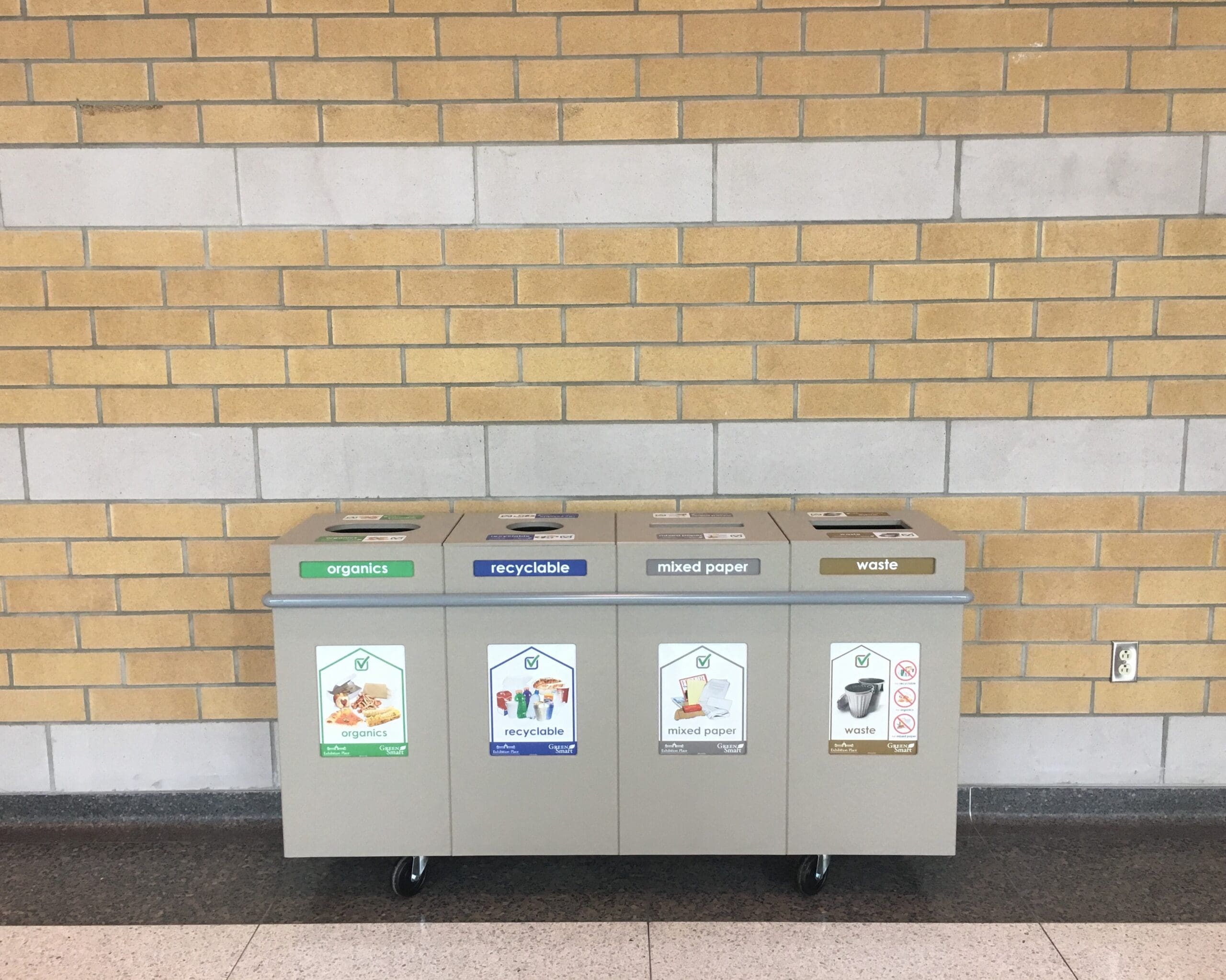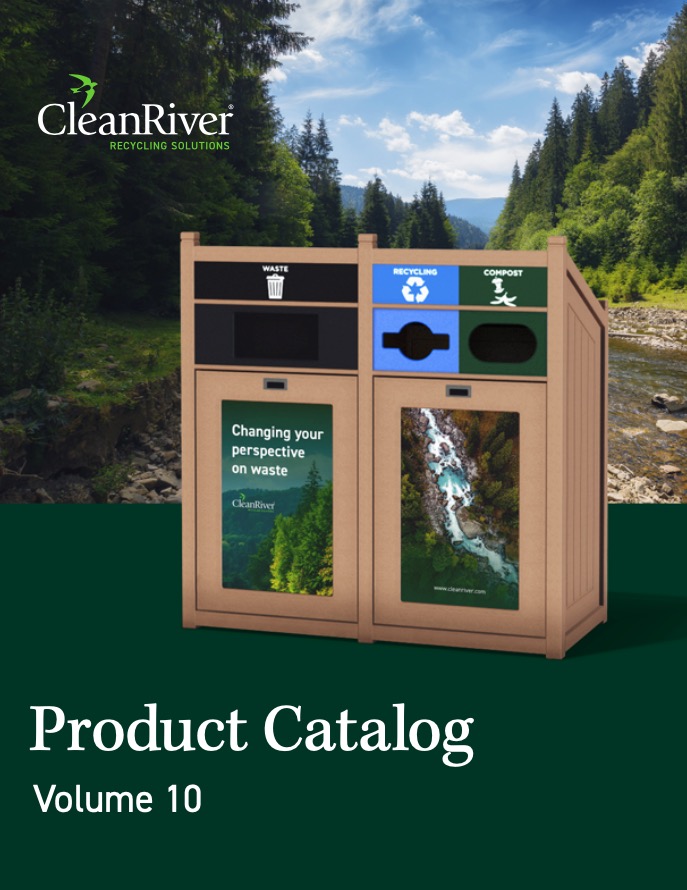Share
Getting started with a waste recycling program is easy, but it requires a methodical approach and some basic preparation. A successful recycling program does not always mean a large recycling program. Some of the most successful recycling programs are small but well managed. Below are some preliminary considerations and tips that may be helpful.
1. Who Takes Away My Trash?
At CleanRiver, we strongly recommend that you get a thorough understanding of your waste hauler contracts before starting a recycling program. Often, organizations are paying for daily pick-up schedules when dumpsters are only half full. Determine how often the dumpsters are actually full and need emptying and then update your waste hauling contract accordingly. By simply reducing the frequency your waste hauler is picking up, you can instantly reduce your collection costs.
2. What’s Being Thrown Out?
Don’t forget that the whole point of implementing a recycling program is to divert the amount of solid waste your organization is sending to landfill. So, when you successfully begin to recycle more of your material and reduce your waste, this should lower your waste disposal costs.
With the help of custodial staff and key stakeholders, start a Green Team and conduct a waste audit. This step is key to helping you gain a better understanding of where your organization is in terms of waste management, what is being sent to landfill that could be recycled, and help you find a baseline for areas of improvement and more importantly COST SAVINGS. Because remember, the less waste you have in your recycling program, the less you have to pay to have it removed.
For everything you need to know about how to properly conduct a waste audit, sign up for our free webinar here.
For more ways to reduce your waste disposal costs check out our blog: Save Money on Waste Hauling Fees
And yet another way to save money is to look for available recycling grants in your area. To help you get started, download our free eBook: Recycling Grants: What are they and How to get them?
3. Are You Purchasing Recycling Bins That Are Future-Ready?
Change is constant and in the world of waste management and recycling, this couldn’t be more true. One of the major issues we see is that people take the time to implement all the proper recycling equipment, only to see change be forced on them. For example, they were collecting two or three different waste streams but now, due to a new waste hauler contract or government mandate, their collection streams must change. If your waste and recycling stations are not designed to be future-ready and transition easily to different waste streams then this can end up costing you a lot of time and money.
CleanRiver’s Transition bins allow you to change the number and volume of streams as your recycling program changes.
4. Do You Have High Recycling Stream Contamination?
When any item goes into your recycling bin that shouldn’t be there (because it can’t be recycled), it causes stream contamination. If your recycling stream contamination exceeds your waste hauler’s acceptable level, then your collected content will be considered non-recyclable and tossed in a landfill, costing you more money – not good for your waste diversion rate or your bottom line! So how do you make sure your recycling stream contamination levels stay low?
5. Is My Recycling Program Optimized?
When selecting the capacity of your recycling bins it is the perfect opportunity to decide if your office should do centralized recycling or desk-side recycling. At CleanRiver, we strongly recommend centralized recycling stations especially when it comes to cost savings, and our customers agree. By rolling out a centralized recycling program to over 3,000 employees using CleanRiver Mini Bins, Hennepin County Government Center saw $9,500 per year in savings. For the full financial breakdown check out the Hennepin County Case Study
Centralized recycling stations encourage employees to get up from their desks (a health benefit to any desk job) and sort their own waste. When employees become more aware of what they are throwing out, they will begin choosing the waste stream they deposit their trash into more wisely, thus reducing your stream contamination. And don’t forget the cost savings in janitorial fees when the custodial staff don’t have to go desk to desk to collect every employee’s waste and recycling anymore!
Here are 10 tips from CleanRiver to help you set up a successful office recycling program.
The tiny bin with a big impact. Start saving with the CleanRiver Mini Bin program today.
6. Do I have The Right Recycling Bin Graphics?
Recycling labels are a quick, simple, and often cheap fix when it comes to lowering your recycling stream contamination. When it comes to sorting waste, people only have about 2 seconds to decide which waste stream to toss their trash into. If it’s unclear even in the slightest of what goes where, they’re just going to deposit it into whatever stream is the closest. In order to combat this, your recycling labels should show people exactly what goes where and should communicate your sustainability message to help people make the right decision right away. At CleanRiver, we can customize your graphics to ensure that your organization’s common recycled items are clearly identified on your recycling labels.
Visual: CleanRiver customized graphics at Toronto Enercare Centre

So get your graphics right and use our CleanRiver’s 3 Tips For Ordering the Most Effective Recycling Labels for your Program.
For more information on how to get the right bins for your office recycling program check out our blogs 5 Pro Tips For Buying Recycling Bins and How Many Different Bins Do I Need For My Recycling Program?
CleanRiver Recycling provides a variety of innovative, flexible and customizable recycling solutions. To determine the right solution to meet your needs, use the CleanRiver product selector.
If you have additional questions that weren’t answered in this blog post please call us at 1-888-646-4246 or email solutions@cleanriver.com.

